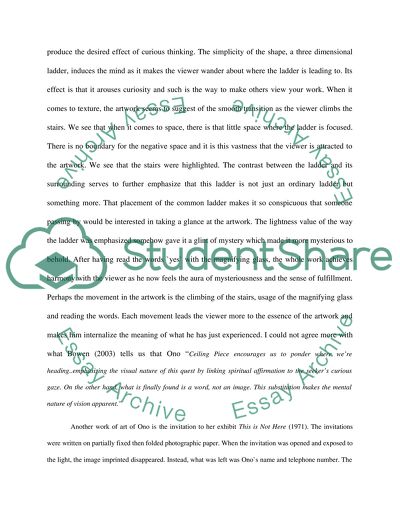Cite this document
(“Deciphering Yoko Ono's Artworks Essay Example | Topics and Well Written Essays - 1000 words”, n.d.)
Deciphering Yoko Ono's Artworks Essay Example | Topics and Well Written Essays - 1000 words. Retrieved from https://studentshare.org/visual-arts-film-studies/1527160-deciphering-yoko-onos-artworks
Deciphering Yoko Ono's Artworks Essay Example | Topics and Well Written Essays - 1000 words. Retrieved from https://studentshare.org/visual-arts-film-studies/1527160-deciphering-yoko-onos-artworks
(Deciphering Yoko Ono'S Artworks Essay Example | Topics and Well Written Essays - 1000 Words)
Deciphering Yoko Ono'S Artworks Essay Example | Topics and Well Written Essays - 1000 Words. https://studentshare.org/visual-arts-film-studies/1527160-deciphering-yoko-onos-artworks.
Deciphering Yoko Ono'S Artworks Essay Example | Topics and Well Written Essays - 1000 Words. https://studentshare.org/visual-arts-film-studies/1527160-deciphering-yoko-onos-artworks.
“Deciphering Yoko Ono'S Artworks Essay Example | Topics and Well Written Essays - 1000 Words”, n.d. https://studentshare.org/visual-arts-film-studies/1527160-deciphering-yoko-onos-artworks.


